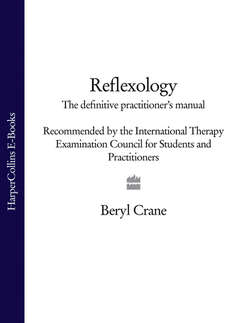Читать книгу Reflexology: The Definitive Practitioner's Manual: Recommended by the International Therapy Examination Council for Students and Practitoners - Beryl Crane - Страница 10
Chinese origins
ОглавлениеAncient Chinese writings described a pressure therapy using the fingers and thumbs. Acupressure is an old Oriental therapy, ‘acu’ meaning ‘needle point’; however, finger pressure was used long before needles. There are different types of acupressure, from the very gentle to deep digital and thumb pressure. There were many early books written on massage or ‘examining foot method’ as it was then called. In reflexology, the varying pressures are used according to each individual’s requirements and the diagnostic techniques are very similar to those used in Chinese acupressure.
In the Sung Dynasty (AD 960–1280) a paper that first appeared in Essentials of Preserving Life showed some exercise routines, which, when repeated, were supposed to be excellent for health. One of these routines was to stretch the hands forward and clench firmly the balls of the extended feet and lower the head as if paying homage; this was repeated 12 times, after which you then returned to the crossed leg position and placed your clenched hands back into your lap. Many ancient diagrams survived of these early ‘Dao Yin’ exercises that were the earliest forms of Chi Kung (Qigong); these were traditionally considered representations from the Chinese ancients of longevity each of whom had their own special method of healing diseases. One in particular is an acupressure cure for lumbago or any low back pain; it shows the person facing the wall, pressing the palm of the right hand against the wall, letting the left hand drop naturally; the right foot is also placed against the wall, and the person then proceeds to exhale very slowly 18 times. This is then repeated with the left hand and foot. This exercise is claimed to heal strain of the lumbar muscles, and relieve lower back pain and lumbago. These actions indicate how important the hands and feet are considered to be in maintaining good health in TCM.
Acupuncture itself developed throughout the early Shang Dynasty in the 16th to 11th centuries BC. It became a method of treating disease and pain by the insertion of many different types and sizes of needles into specific areas of the body. These areas, or acupuncture points (acupoints), were thought to lie on lines or channels known as meridians (see chapter 2 for a full description). Acupressure and acupuncture were, however, only a small part of the treatment of TCM. The system also included a vast herbal tradition and dietary practices.
Buddhism was a religion of East and Central Asia that grew from the teachings of Gautama Buddha. His philosophy was that pureness of spirit was the answer to all suffering. Buddhism spread to China around the time of the Han Dynasty (about 206 BC). There is evidence from this period that in ancient times the feet symbolized many things. A Buddha’s footprints carved in the rock at Kusinara, China, shows signs on the second, third, fourth and fifth toes depicting the Sun, in ancient times possibly symbolizing the Qi energy within the toes (see figure 1.3).
